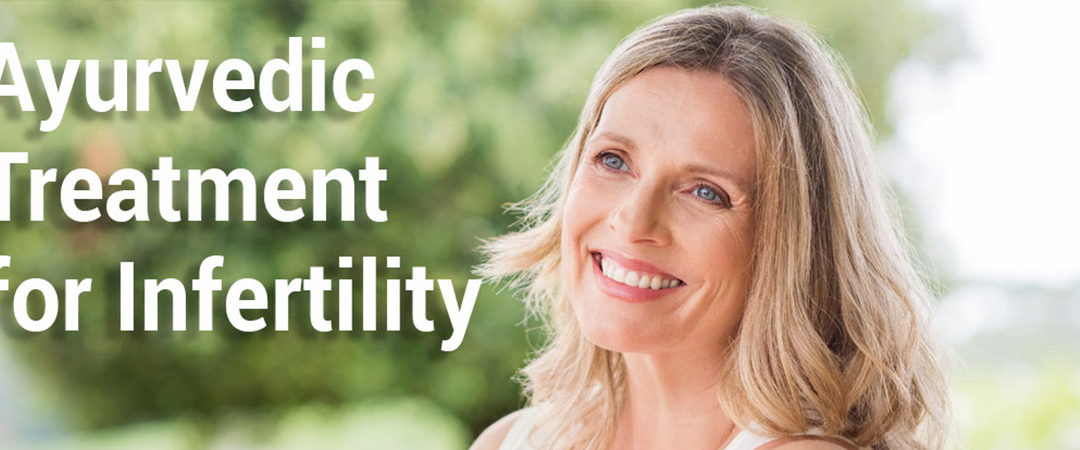
Migraine
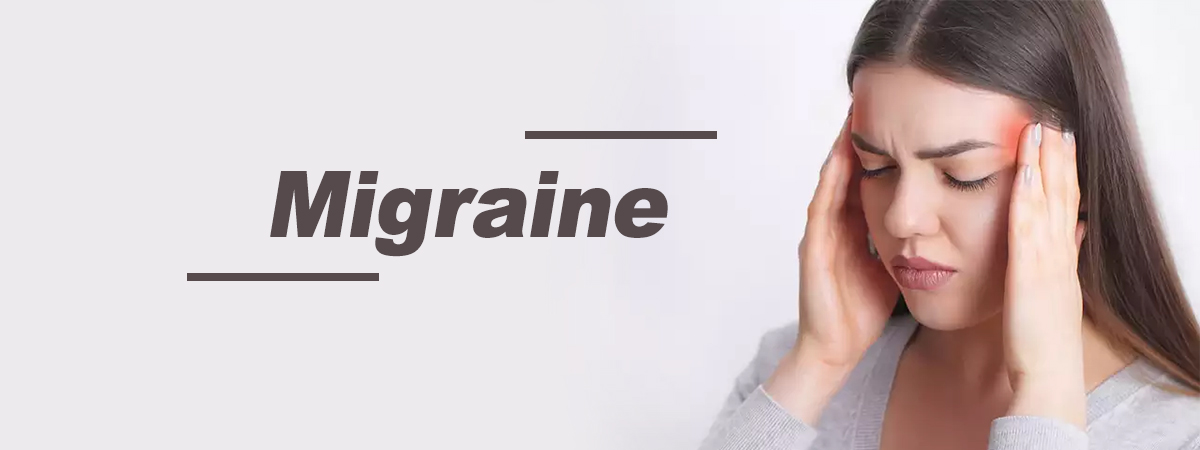
Migraine Headache treatment with Ayurveda
Migraine is a type of headache which is affecting many people’s lives. The pain in migraine is different from headache. Migraine pain can be throbbing, pulsating, pounding or debilitating etc. Dull and steady pain can also be felt in the head. The attack of migraine can last upto many hours and also for many days. In some people the attack is very severe that they may need hospitalisation to deal with it. Migraine can interfere with daily activity of people as a result it has physical as well as mental ill effects on people who have been facing this annoying health problem.
Causes of migraine
The exact cause of migraine is still unclear till now to researchers. However a number of factors can trigger the migraine which can result in abnormal brain activity. In this abnormal brain activity the nerve pathways are involved in the brain. Also chemical level changes occur. These factors affect blood flow in the brain and its surrounding tissues. In the brainstem the nerves branching off can become overexcited, this can further lead to dilation of blood vessels. This is the pathogenesis of migraine. The common causes of migraine are as follows :
- Genetics can be an important factor in migraine. If there is family history of migraine then there are more chances that one can suffer from it.
- Many environmental factors are also associated with initiation of migraine as loud sounds, strong smells, excessive smoke and bright lights etc.
- Women are more prone to this problem. However it can occur in any sex.
- Hormonal changes in women during menstrual cycle, pregnancy or menopause can lead to migraine.
Irregular sleeping patterns can also cause migraine. - Excessive and regular intake of alcohol or caffeine may lead to migraine.
- Sudden caffeine withdrawal can also lead to migraine.
- Stress and anxiety can also lead to migraine.
- Head injury can lead to migraine in future.
- Migraine can begin at any age, but most often it occurs in adolescents.
- Excessive physical activity can also lead to migraine.
- Chronic headache may sometimes turn into migraine. However a new headache after the age of fifty can also be migraine.
- In some people some medications or some food items may provoke and aggravate migraine.
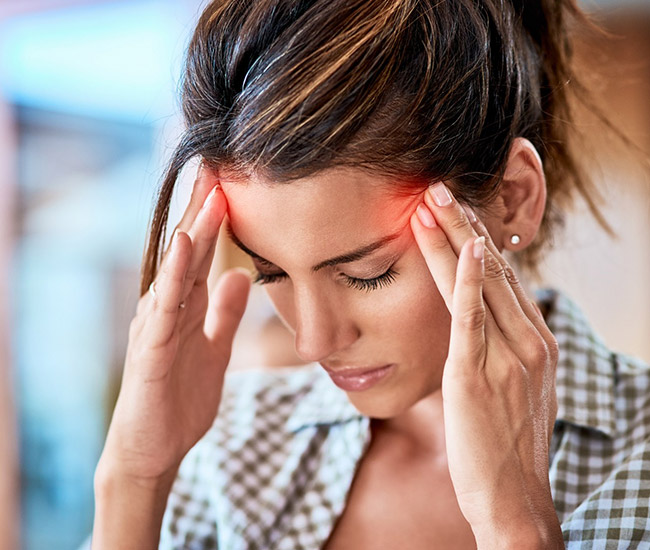
Common symptoms of migraine
- Throbbing pain in head. Headache can be felt on one side of head or on both sides. Sometimes pulsing sensation is felt in the head instead of pain.
- Nausea. Vomiting can also occur in some people.
- Sensitivity to light or sound or smell or all of them. The sensitivity to light, sound or smell can be mild, moderate or severe.
Besides these main symptoms there are some other symptoms which also occur in some people. These symptoms are :
- Mood changes. Mood changes can be mild to severe and may lead to anxiety and depression etc. in future.
- Pain and stiffness in neck.
- Increased thirst.
- Numbness in the face.
- Difficulty in speaking and hearing.
- Loss of appetite.
- Fatigue.
Types of migraine
- Migraine with aura: In some people visual disturbances or flashes of light or tingling on one side of face etc. Symptoms may occur before commencement of migraine. These are called aura. These symptoms can start one hour before starting migraine.
- Migraine without aura: It is not necessary that every person suffering from migraine will face aura phase. Migraine can occur without aura phase, where a person does not face these symptoms before migraine.
How to diagnose migraine?
If someone feels that they have any symptoms or chronic headache then they should consult a neurologist. Neurologists are specialists in treating migraine. Doctors will make a diagnosis on the basis of medical history, clinical examination, and symptoms present. Sometimes doctors may advise you to perform some investigations to rule out the underlying cause of pain.

Management of migraine in modern system of medicine
In the modern system of medicine pain relieving medications and preventive medications are the main line of management for migraine. Besides this symptomatic management of other symptoms like nausea,vomiting etc. is also done. Management also depends on frequency and severity of migraine. Paracetamol,aspirin and caffeine are commonly used to relieve pain during migraine. But overuse of these medications can also cause various health issues. So it is always advised to take management under supervision of a physician. Prescribed medications like sumatriptan, rizatriptan etc. are used to block the pain pathways in the brain. These are available in the form of tablets, nasal sprays etc. But these medications are not safe for heart patients. Besides these many other medications are prescribed by doctors to treat migraine which can be in the form of tablets, nasal sprays or shots etc. High blood pressure medications, anti anxiety drugs or anti seizure drugs can also be used by physicians depending upon the condition of the person. Stress management, lifestyle changes, cognitive behavioral therapy and counselling etc. are other treatment options which can be adopted by a physician.
Common practices which can help people with migraine attack :
- You are advised to make a diary related to your migraine attacks. In this diary you can note down the duration between two attacks, duration of migraine attack, severity of attack, any associated symptoms and does anything aggravate these symptoms etc.
- Develop a sleeping pattern. Try to go to bed at the same time daily and try to wake up at the same time daily.
- Try not to spend excessive time in front of television, computer, laptop or mobile.
- Develop a healthy eating pattern.
- Do regular exercise. Exercise does not mean going to gym or doing hard exercises. You can do walking, jogging, swimming and cycling etc.
- You can also learn some yoga postures from an expert to relax the mind and body. Meditation along with yoga is also helpful in relaxing the mind.
Migraine and Ayurveda
Ayurvedic experts correlate migraine with ardha avabhedaka. Classical Ayurvedic text Charak Samhita had explained ardha avabhedaka under shiro roga. Shiro roga are diseases of the head. In ardha avabhedaka Vata dosha and Kapha dosha gets vitiated due to various causes. These vitiated Vata dosha and Kapha dosha get embedded into the half head region. Due to this severe bursting pain occurs in half the area of forehead, eyebrows, temple region, ears and eyes. The pain is intolerable and penetrating. If the disease progresses then it can damage eyes and ears.(1)
Causes of ardha avabhedaka
- Excessive intake of dry food items.
- Excessive consumption of food.
- Eating food without digestion of previous food.
- Excessive exposure to air.
- Excessive exposure to fog.
- Forcefully holding the natural urges of urine and stool.
- Excessive physical activity and exercise.
Management of ardha avabhedaka
Master Charak had mentioned various management options to manage ardha avabhedaka. Your treating Ayurveda physician can best decide about the options you need.
- Oleation therapy: In this therapy Ayurveda physicians advise to drink a particular amount of medicated ghee (clarified butter) etc.
- Nasya: Here nasal administration of various Ayurvedic preparations has been done under supervision.
- Fomentation therapy is also used in managing ardha avabhedaka.
- Shirobasti: In shiro basti the medicated Ayurvedic oil is placed over head for a particular time period.
- Decoction and fat enemas are also used to manage this problem.(1)
Besides these many oral Ayurvedic preparations, dietary and lifestyle changes are also advised by Ayurveda physicians to manage this problem. Some of the commonly used oral preparations are pathyadi kwatha, godanti bhasam and shira shooladi vajra rasa etc. Your Ayurveda physician can best decide about the treatment options you need. So if you have been facing this problem, consult a nearby Ayurveda physician to manage this problem.
References
Charak Samhita with hindi commentary,part-2,Sidhi Sthana, 9/25,page no. 72-78 by Aacharya Vidyadhar Shukla and Professor Ravidutt , Chaukhamba Sanskrit Pratishthan,2007.
Skin Care in Ayurveda
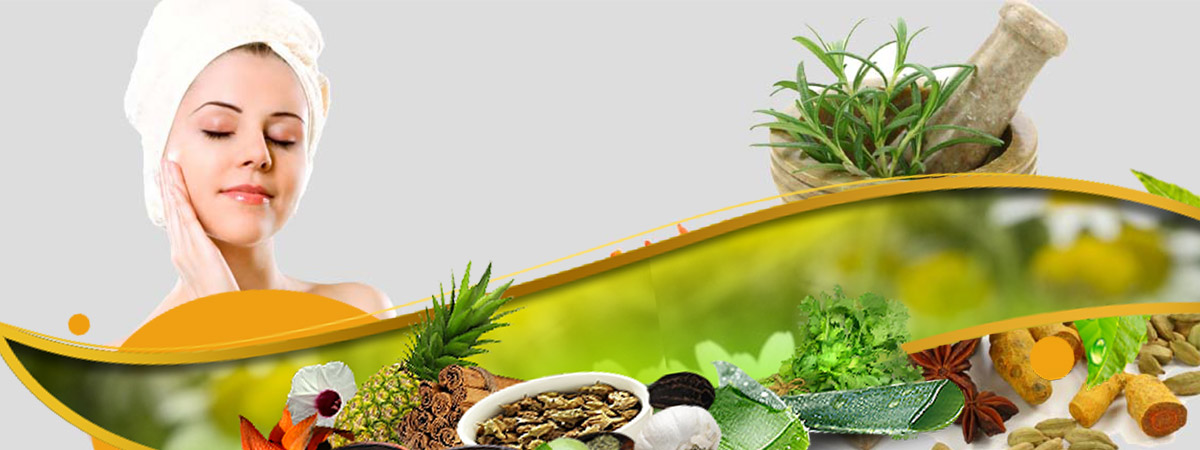
Ayurveda in treating skin disorders
Placing Soaked linen (PICHU DHARAN) – A thick swab or a cotton pad is called as Pichu. Pichu Dharana i.e. placing of soaked linen is a technique in which a piece of cloth, gauze or linen is soaked in the medicated ghee or oil and placed in the desired position over the body or in the body parts according to the site of the treatment. The procedure is said to be more valuable in dermatological conditions of the scalp as well as psychological disorders. This process can be confidently executed in painful conditions or ulceritis of the scalp too as they do not require massage.
There are six different types of pichus :-
- Shiro pichu that is fixed on the Brahmarandhra (anterior fontanalle)
- Yoni pichu – based at vulvae or at the external of vaginal canal
- Guda pichu – fixed at anus or at anal canal
- Karna pichu – inserted in the external ear
- Nasa pichu – inserted in the region of nostrils
- Nabhi pichu – placed over the navel
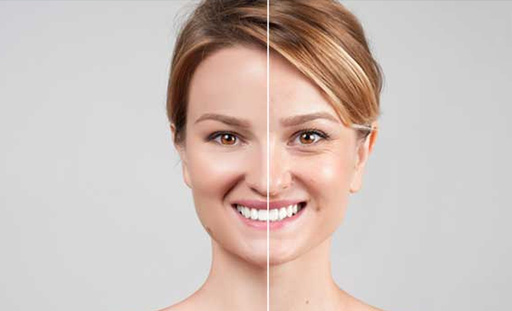
Experienced Ayurveda doctor can help you with a healthy mind and body
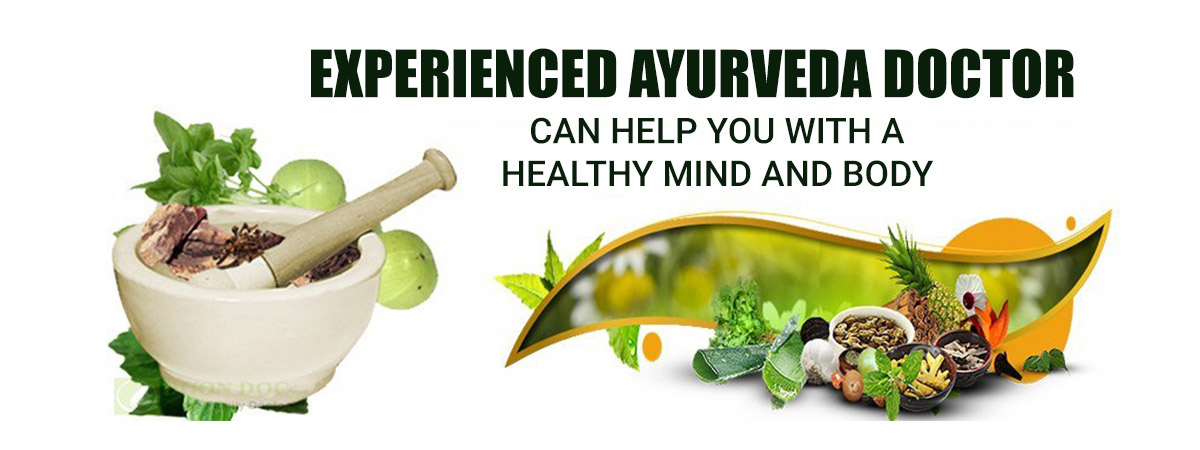
Experienced Ayurveda doctor can help you with a healthy mind and body
An experienced Ayurveda doctor can help you with a healthy body by helping in
Builds Immunity – In the traditional ayurvedic medicine, different types of herbs, vitamins and proteins are blended together to prevent the immune disorders. An experienced Ayurveda doctor can help you with the right techniques to strengthen the body’s defenses that can keep the appetite strong. With Ayurveda, one can get rid of many types of illnesses that are not easy to settle in otherwise.
Detoxifies/ Cleanses the body – An experienced Ayurveda doctor can help in detox treatment for better digestion and keeping the body in balance. Ayurvedic medicines help in cleansing the overall insides of the person too, who might be suffering from any illness, be it physically or mentally.
Reduces stress – There are some tonics and activities that are meant for reducing and relieving stress for the physical well-being. However, balancing mood as well as mental activity can involve getting more deeply in tune with the spiritual and tipping the scales back down from the material world.
Yoga – Yoga and Ayurveda are interrelated to each other and share the same great tree of Vedic knowledge that rings around all of human life and the entire universe. This is not a form of exercise but a lifestyle that includes a combination of breathing techniques, meditation, and postures. It weaves a fusion between the mind, body, and soul and due to this yoga has been regarded as one of the most holistic alternative therapies. One type of yoga is the ayurvedic massage yoga that needs a lot of stretching. An experienced Ayurveda doctor can guide you in such exercises / stretches integrated with various massage techniques.
Ayurveda treatments
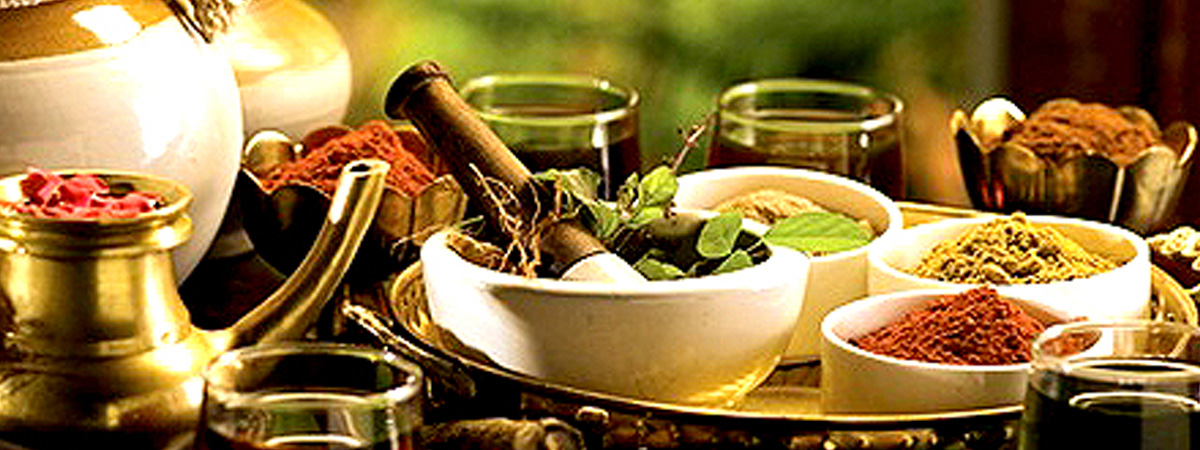
Ayurveda treatments
Nose Therapy (NASYA) – It is a kind of treatment for body cleansing as used in Ayurvedic administration of drugs by the route of nasal cavity.When an excess of bodily fluids accumulates in the sinus, throat, nose or head areas, it is best eliminated through the nose.
Mouth Therapy (GANDOOSH / KAVAL) – It is also kown as “Oil Pulling”. Oil pulling is a method where one needs to sip some oil and swish it through the oral cavity for some times before throwing it out.
Oil retention Therapy ( KATI VASTI/ JANU VASTI/ GREEVA VASTI) – It is a method in which the oil is retained at the desired site on the body. This is beneficial in joint disorders and the back bone related problems.
Eye Therapy (AKSHI TARPAN) – Epiphora, itching of eyes and other disorder of eyes are treated with Akshi Tarpan.
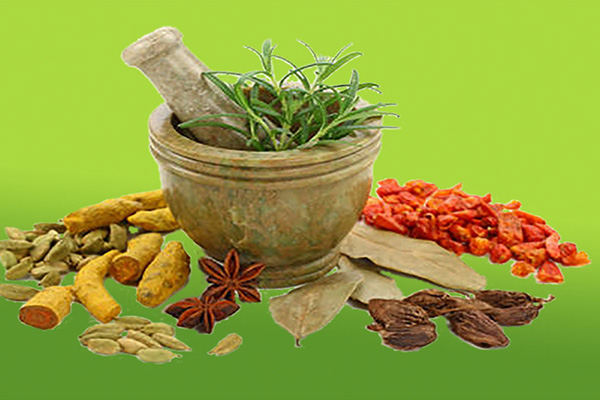
Panchakarma Detox Therapy
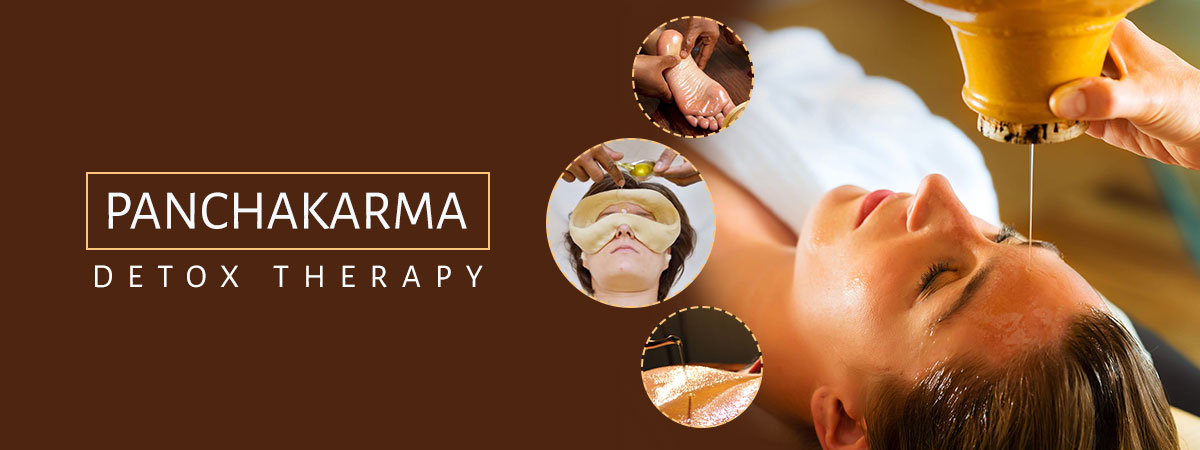
Panchakarma (Detox Therapy)
Detox / Panchakarma benefits: –
- Immunity enhancer
- Relieves the body from unwanted toxins
- Helps in treatment of various disorders like skin infections, Arthritis, Diabetes,
- Obesity, liver ailments, digestive ailments, reproductive system disorders, sinus
- Related problems and many more.
- It has shown very good results in Stress Management as well.
- Virechana is done to clean the bowels with selected medication and involves expelling doshas through purgation for excessive pitta(dosha) in the body. This is a non painful detox method, one of the the easiest treatment with least complications to follow.
- Vamana is a therapeutic process of purgation and involves removal of ‘doshas’ through the oral route
- Anuvasan Basti is oil predominant process for detoxifying done with medicated oil
- Nirooh Basti is decoction predominant process for enema
- Nasya or Nose Medication removes the toxins via nostrils
What you should know?
- Vamana helps to treat diseases like cough, asthma, indigestion, poisoning, frequent tonsillitis, nasal discharge, tuberculosis, etc.
- As a precaution, after a person goes through vamana, few things should be avoided – loud speech, overeating, continued sitting, too much walking, anger, anxiety including suppression of natural urges.
- Virechana detox therapy mainly assists to throw out toxins and doshas from liver, blood and the intestines
- Virechana helps to treat skin diseases, jaundice, constipation, headache, fistula, hemorrhoids, intestinal parasites, herpes and anemia as a detoxifying therapy. However there are contraindications from this therapy too which includes ulcerated rectum, pregnancy, obesity, diarrhea, cardiac ailments and tuberculosis.

